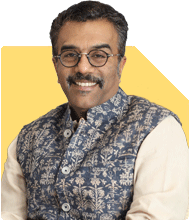Should I stop my Quant Infrastructure Fund SIP?
Ramalingam Kalirajan |10902 Answers |Ask -Follow
Mutual Funds, Financial Planning Expert - Answered on Feb 18, 2025
He has an MBA in finance from the University of Madras and is a certified financial planner.
He is the director and chief financial planner at Holistic Investment, a Chennai-based firm that offers financial planning and wealth management advice.... more

Should I stop SIP of quant infrastructure fund direct growth Invesing from last two year 5000 monthly SIP. If I stop this SIP in which fund should I invest Please suggest.
Assessing the Current SIP in Sectoral Fund
Sectoral funds focus on one industry, making them highly volatile.
They perform well in specific cycles but can be risky in downturns.
Holding them for long-term wealth creation may not be ideal.
If the fund has performed well so far, consider partial exit.
If you seek more stability, shifting to diversified funds is better.
Should You Stop the SIP?
If this is your only SIP, stopping is not recommended.
If you already hold diversified funds, partial withdrawal is an option.
Sectoral funds need regular tracking and rebalancing.
If you don’t have time for active monitoring, consider a switch.
Alternative Investment Options
Diversified Equity Funds
These funds invest in multiple sectors, reducing risk.
They are managed actively to capture market opportunities.
They offer better stability compared to sectoral funds.
Large and Mid-Cap Funds
These funds balance stability and growth potential.
Large caps provide steady returns, while mid-caps offer higher upside.
They are less risky than pure mid-cap or sectoral funds.
Balanced Advantage Funds
These funds shift between equity and debt based on market conditions.
They reduce downside risk during market corrections.
Suitable for investors seeking moderate risk with consistent returns.
Multi-Asset Funds
These invest in equity, debt, and gold for diversification.
They lower risk while ensuring steady performance.
Ideal if you want less market-linked volatility.
Tax Implications if You Redeem
Equity Mutual Funds:
LTCG above Rs 1.25 lakh taxed at 12.5%.
STCG taxed at 20%.
If you shift from sectoral to diversified funds, staggered withdrawals help.
Final Insights
Sectoral SIPs need close tracking; diversified funds offer stability.
If your portfolio lacks balance, shifting is a wise move.
Consider switching to diversified or balanced funds for long-term growth.
Review investments periodically to ensure alignment with goals.
Let me know if you need a specific fund recommendation.
Best Regards,
K. Ramalingam, MBA, CFP
Chief Financial Planner
www.holisticinvestment.in
https://www.youtube.com/@HolisticInvestment
You may like to see similar questions and answers below
Omkeshwar Singh | Answer |Ask -Follow
Head, Rank MF - Answered on Jun 09, 2021
Omkeshwar Singh | Answer |Ask -Follow
Head, Rank MF - Answered on Nov 16, 2022
Ramalingam Kalirajan |10902 Answers |Ask -Follow
Mutual Funds, Financial Planning Expert - Answered on May 29, 2024
Ramalingam Kalirajan |10902 Answers |Ask -Follow
Mutual Funds, Financial Planning Expert - Answered on May 20, 2024
Ramalingam Kalirajan |10902 Answers |Ask -Follow
Mutual Funds, Financial Planning Expert - Answered on Jan 14, 2025
Anu Krishna |1754 Answers |Ask -Follow
Relationships Expert, Mind Coach - Answered on Dec 18, 2025
Anu Krishna |1754 Answers |Ask -Follow
Relationships Expert, Mind Coach - Answered on Dec 18, 2025
Anu Krishna |1754 Answers |Ask -Follow
Relationships Expert, Mind Coach - Answered on Dec 18, 2025
Chocko Valliappa |544 Answers |Ask -Follow
Tech Entrepreneur, Educationist - Answered on Dec 18, 2025
Chocko Valliappa |544 Answers |Ask -Follow
Tech Entrepreneur, Educationist - Answered on Dec 18, 2025
Chocko Valliappa |544 Answers |Ask -Follow
Tech Entrepreneur, Educationist - Answered on Dec 18, 2025
Anu Krishna |1754 Answers |Ask -Follow
Relationships Expert, Mind Coach - Answered on Dec 18, 2025
Chocko Valliappa |544 Answers |Ask -Follow
Tech Entrepreneur, Educationist - Answered on Dec 18, 2025
Chocko Valliappa |544 Answers |Ask -Follow
Tech Entrepreneur, Educationist - Answered on Dec 18, 2025
Naveenn Kummar |236 Answers |Ask -Follow
Financial Planner, MF, Insurance Expert - Answered on Dec 18, 2025

























